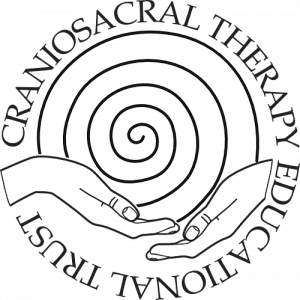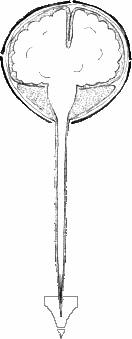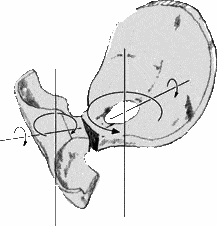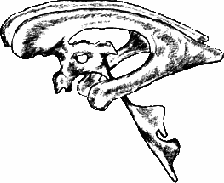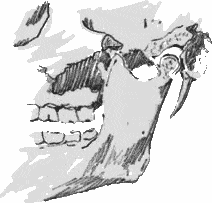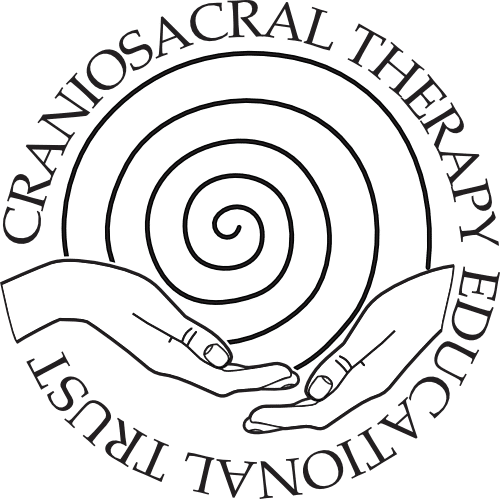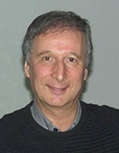Course Curriculum
Craniosacral Therapy Practitioner Training
Allow physiological function within to manifest its unerring potency rather than apply a blind force from without.
Dr. William G. Sutherland
Aims of the Training:
- to provide a deep appreciation of the Breath of Life and the “primary respiratory system”
- to provide an in-depth understanding of the healing principles of the system with the ability to appropriately apply this understanding in a therapeutic context
- to cultivate clearly defined palpation and treatment skills that support the health of the patient and relate with care and competency to disease processes
- to develop trust in the instinctual, perceptual and spiritual capabilities of the student
- to graduate skilled, safe and therapeutically effective Craniosacral Therapy practitioners.
Seminar One – Five Days
Preparing the Ground: presence and palpatory awareness
- Introductions
- The biodynamic paradigm
- Practitioner fulcrums
- The ritual of contact – creating safety
- Presence, embodiment and mindfulness
- Practitioner neutral
- Palpation and perception
- Being to being relational field
- Touch and the relational field
- The five core aspects of the primary respiratory mechanism
- Primary respiratory system; the Breath of Life and three tides
- Orienting to the ‘biosphere’ of the client
- Perception and palpation of the three tides: the cranial rhythmic impulse, mid-tide and long tide
- Shifting perceptual fields
- Longitudinal fluctuation and cerebrospinal fluid
- Stillpoints in the fluid tide
- Trauma part 1: resources and health
- Palpation of the fluid tide
- Synchronising with the long tide
Seminar Two – Four Days
Life and Motion: the fluid body and potency
- Palpation skills: listening hands, diagnostic touch, therapeutic touch
- Embryology part 1: from conception to the development of the notochord
- The midlines part 1:
- as a fluid core
- cerebrospinal fluid
- fluid within the fluid: potency and liquid light
- primal midline and the notochord
- Orienting to wholeness and the ‘holistic shift’; gateway to the inherent treatment plan
- The ‘fluid body’ – longitudinal and lateral fluctuations
- Tidal motion and disordered fluid motion:
- as the river flows: stasis, stagnation, rapids, whirlpools and lateral fluctuations
- fluid fulcra; identification and holding in a wide perceptual field
- Interacting with fluids: augmentation skills
- Perceiving the role of stillness in the healing process
- Trauma part 2:
- safety, danger and life-threat
- resources and overwhelm
- shuttling
- Supporting safety during practice sessions
- Reciprocal tension membranes and reciprocal tension motion
- Orienting to the biosphere and widening to the long tide, transmutation and dynamic interchange
Seminar Three – Four Days
Entering the Heart of Healing: facilitating states of balance
- Orienting to tissues, fluid and potency
- Palpation of tissue motility: cranial motility, flower petals
- Distortion patterns and tissue memory
- Understanding and perceiving biodynamic and conditional forces
- Natural fulcra and inertial fulcra
- Perceiving conditioned patterns of experience
- The ‘holistic shift’ and following the inherent treatment plan
- The heart of the healing process: states of balance
- Direction of priority
- The role of settling and stillness in the therapeutic process
- Accessing states of balance within the field of tissues, fluid and potency
- Trauma part 3: Dissociation and embodiment
- orienting to body sensation
- WOSI (weight, outline, skin and inside)
- Reciprocal tension membrane (RTM) – automatic shifting
- RTMs and patterns of experience, accessing states of balance
- Stillpoints revisited – CV4 via tissue motility at occiput
Seminar Four – Four Days
Cranial Motility and Health: organising forces and augmentation skills
- Cranial bowl and the unity of structure and function
- Embryology part 2: cranial mesenchyme
- continuity of bone and membrane
- the cranium as a fluid filled membrane with islands of bone
- Motility of individual bones and disengagement of cranial sutures: temporal, parietal and frontal bones
- Augmentation skills
- The principle of “doing not-doing”
- Dr. Becker’s 3-step healing process: (1) tissues, fluids and potency seek a state of balance; (2) perceiving expressions of health within states of balance; (3) perceiving tissue and fluid re-organisation
- Orientation to the Teaching Clinic
- Working with the continuity of cranial bones and membranes
- Focusing: as a regulation skill for practitioners
- Deepening into stillpoints: CV4 from sacrum
Seminar Five – Five Days
The Whole in the Part: birth process, the spheno-basilar junction and beyond
- Birth process from the baby’s perspective
- Birth as a formative transition: physical and psychological imprints
- The birth journey and birth presentation
- Birth stages
- Cranial molding and patterns of the spheno-basilar junction (SBJ)
- The significance of the SBJ and whole body SBJ connections
- Physiological patterns of the SBJ
- Non-physiological patterns of the SBJ
- Case history taking
- Introduction to intraosseous strains – the occiput
- Trauma part 4: Integrating verbal skills
- freeze, dissociation and activation
- ‘Polyvagal Theory’ and social engagement
- slowing down, staying with body sensations, resources, being present, finding a witness, creating safety, allowing discharge
- Lumbo-sacral junction and sacroiliac joints
Seminar Six – Five Days
Support and Balance: spinal dynamics and the primal midline
- The suspensory nature of the three bodies: physical body, fluid body and tidal body
- The spine and connective tissue continuity
- The dural tube
- Embryology part 3: formation of the notochord and somites
- The spine:
- embryology of the spine: working with embryological triads
- vertebral dynamics and states of balance
- cervical, thoracic and lumbar regions
- Neurological facilitation part 1: facilitated segments and somatic loops
- Embryological fluid fields of the spine
- The midlines part 2: the primal midline, layers of function
- Deepening into the stillness of the midline
- The suspensory nature of the midline in health
- The occiput, atlas and axis – where the midline bends
- The upper embryological triad of the sphenoid, occiput and atlas
- Listening and responding to the inherent treatment plan – the automatic shifting of potency
- Stillpoints: EV4
Seminar Seven – Four Days
Return to Wholeness: dynamics of fascia and the inherent treatment plan
- Connective tissues and connective tissue dynamics
- Whole body connective tissue matrix
- New science of fascia
- Superficial fascia and deep fascia
- Fascia as a communication pathway and sensory organ
- Bio-tensegrity: whole body patterns
- The liquid crystalline matrix
- Transverse structures; the four diaphragms
- Thoracolumbar fascia and its significance
- Psoas fascia and its interconnections
- Entrapped force vectors
- Principles and practice working with limbs and peripheral joints
- The original matrix – a blueprint of health
Seminar Eight – Four Days
The Seat of the Soul: fluid, potency and the central nervous system
- Jugular foramen and cranial outflow – clearing the outlets to cranial fluid drainage
- Venous sinus drainage
- Motility of the central nervous system
- The mind and the brain
- Neurological facilitation and the stress response
- Orienting to the cerebral cortex, brainstem and cerebellar hemispheres
- The ventricles:
- ‘tour of the minnow’
- liquid light
- 3rd ventricle dynamics
- the pituitary and pineal glands
- neuro-endocrine considerations
- Conception ignition: ignition of the ground of being
Seminar Nine – Four Days
Expression and Being: the face and the heart
- Communication and co-operation – the social being
- Motility and mobility of the facial bones
- Fronto-nasal, lacrimal and ethmoid relationships
- The face and hard palate: vomer, palatines and maxillae
- Patterns of the maxillae
- Embryology part 5: derivatives of the pharyngeal arches; bones, muscles, cranial nerves
- Embryological fluid fields of the head, face and throat
- Trauma part 5: the ‘Polyvagal Theory’ and Social Engagement System
- Babies, social engagement and self regulation
- Practical feedbacks
- Introduction to body viscera
- Embryology part 6: body viscera
- The heart and lungs
Seminar Ten – Four Days
As Above So Below: the jaw and pelvis
- The temporo-mandibular joint (TMJ) and its interconnections
- the hyoid bone
- sternocleidomastoid and lateral pterygoid muscles
- TMJ ligaments – specific dynamics and inertial patterns
- dental work issues
- Cranio-pelvic resonance
- The eyes, boney orbit and zygomae
- Below the diaphragm
- Embryology part 7: the story of the endoderm
- Motility of the abdominal field
- The liver, stomach and gut tube
- The sixth sense – interoception and the “second” brain
- Small intestines and large intestines
- Practical feedbacks
- Dynamics of transference and counter-transference
- Inherent treatment plan: the “mysterious gateway” – deepening into states of balance and the long tide
Seminar Eleven – Five Days
Out Into the World: pregnancy, birth and completion
- Closing the circle: biodynamics in practice
- Introduction to pre-natal dynamics
- Tuning in to the “inner embryo” and perfect health
- Birth imprints in adults; birth as a formative experience
- “As the twig is bent, so the tree inclines”
- life statements
- Principles of working with babies and families
- Birth ignition – the umbilicus, heart and lungs
- The umbilicus as an organising centre and relational midline – umbilical shock
- Working with ‘another pair of hands’
- Review of organisational skills and healing principles
- Birthing the practitioner; stepping out into practice
- Practice management
- Inherent treatment plan; Dynamic Stillness and rhythmic balanced interchange
- Integration and completion.
